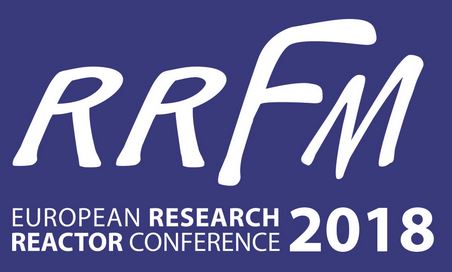ENS Guide to European web sites
Scientific institutions
The European Organization for Nuclear Research (CERN), based in Geneva, Switzerland, is the world's
largest particle physics centre. Founded in 1954, the laboratory was
one of Europe's first joint ventures and includes now 20 Member States.
Some 6500 visiting scientists, half of the world's particle physicists,
come to the CERN for their research: they represent 500 universities
and over 80 nationalities. The CERN exists primarily to provide the
scientists with the necessary tools: these are accelerators, which accelerate
particles to almost the speed of light and detectors to make the particles
visible. The CERN employs just under 3000 people, representatives of
a wide range of skills: physicists, engineers, technicians, craftsmen,
administrators, secretaries, workmen... The scientific and technical
staff designs and builds the laboratory's intricate machinery and ensures
its smooth operation. It also helps prepare, run, analyse and interpret
the complex scientific experiments:
http://public.web.cern.ch/Public/Welcome.html
The European Synchrotron Radiation Facility (ESRF), based in Grenoble, France, is an outstanding
example of European cooperation in science. Eighteen nations work together
to use the extremely bright beams of light produced by the ESRF's high-performance
storage ring to study a remarkably wide range of materials, from biomolecules
to nano-magnets,from ancient Egyptian cosmetics to metallic foams. The
ESRF's trademark is quality: quality of the X-ray beams and the science
it produces, quality in the instruments and techniques it develops,
and quality of the staff in their support of external user scientists:
http://www.esrf.fr/
Based in Culham, near Oxford, UK, the Joint
European Torus (JET) is the world largest nuclear fusion research
facility. The JET is a collaboration between all fusion organisations
of 20 European countries, with participation of scientists from around
the globe. The JET Joint Undertaking was established in June 1978 to construct and operate the JET, then
the largest single project within the European fusion programme. Coordinated
by Euratom, JET started operating in 1983 and was the first world facility
to achieve a significant productionof controlled fusion power (nearly
2MW) with a deuterium-tritium experiment in 1991. JET has then evolved
into a physics and technology basis for preparing for ITER, the International
Thermonuclear Experimental Reactor. The Joint Undertaking which operated
JET over 16 years, was superseded on 31.12.1999, the ownership of the
facilities being transferred to the UKAEA, and the overall implementation
of further scientific exploitation being now carried out under the European
Fusion Development Agreement (EFDA) The EUROfusion consortium takes this development another step further:
https://www.euro-fusion.org/
Scientists and engineers from the EU, Russia, China,
Japan, South Korea and the United States are working in ITER,
an unprecedented international collaboration on the next major step
for the development of thermonuclear fusion. ITER's mission is to demonstrate
thescientific and technological feasibility of fusion energy for peaceful
purposes. ITER will be the first fusion device to produce thermal energy
at the level of an electricity-producing power station and is the key
element in the strategy to reach the following demonstration electricity-generating
power plant (DEMO) in a single experimental step. ITER is an experimental
reactor based on the tokamak concept: superconducting magnet coils around
a toroidal (doughnut-shaped) vessel confine a mix of charged particles
(plasma) and induce an electrical current. Fusion takes place when the
plasma is hot, dense and contained long enough for the nuclei to start
fusing:
http://www.iter.org/
The European Molecular Biology Laboratory (EMBL)is an intergovernmental organisation specialising in basic research in the life sciences with 21 member states, three prospect and two associate member states.
http://www.embl-heidelberg.de/
The European Southern Observatory (ESO) is an intergovernmental, European organisation
for astronomical research, with 11 member countries. The European
Southern Observatory (ESO) was created in 1962 to establish
and operate an astronomical observatory in the southern hemisphere,
with the aim of furthering and organising collaboration in astronomy.
ESO headquaters are located in Garching, near Munich, Germany. ESO operates
3 sites equipped with powerful instruments in the Atacama desert region
of Chile: Paranal (a very large telescope located on a 2,600 m high
mountain, 130 km south of Antofagasta); La Silla (an observatory at
2, 400 m altitude, 600 km north of Santiago); Llano de Chajnantor (located
on a 5,000 meter high mountain, near San Pedro de Atacama). ESO employs
about 320 international Staff members, Fellows and Associates inEurope
and Chile, plus about 160 local Staff members in Chile.
http://www.eso.org/
With 15 Member States, the European Space Agency (ESA) is Europe’s gateway to space. Its mission
is to shape the development of Europe’s space capability, drawing
up the programme and carrying it through. ESA’s projects are designed
to find out more about the Earth, its immediate space environment, the
solar system and the Universe, as well as to develop satellite-based
technologies and services. ESA’s activities are located on several
sites : Paris, France (headquarters); Noordwijk, Netherlands (European
Space Research and Technology Centre “ESTEC” for spacecraft
and technology development); Darmstadt, Germany (European Space Operations
Centre “ESOC” for controlling satellites in orbit); Köln,
Germany (European Astronauts Centre “EAC” for training astronauts
for future missions); Frascati, Italy (European Space Research Institute
“ESRIN” for collecting, storing and distributing satellite
data to ESA’s partners). ESA has liaison offices in Belgium, USA
and Russia, a launch base in French Guiana, and tracking stations in
various areas of the world. The total number of staff working for ESA
is approximately 1920:
http://www.esa.int/esaCP/index.html
top
|
|

11 - 15 March 2018
Munich, Germany

30 September - 04 October 2018
Prague, Czech Republic |